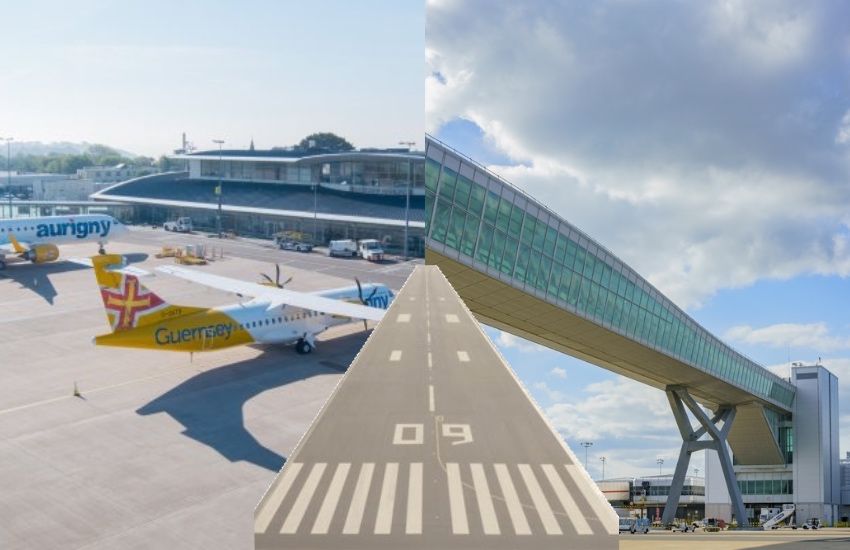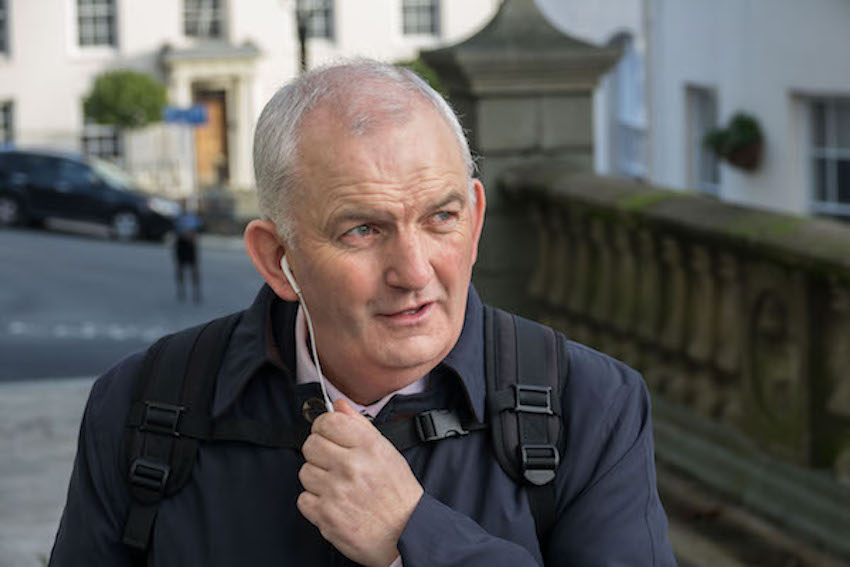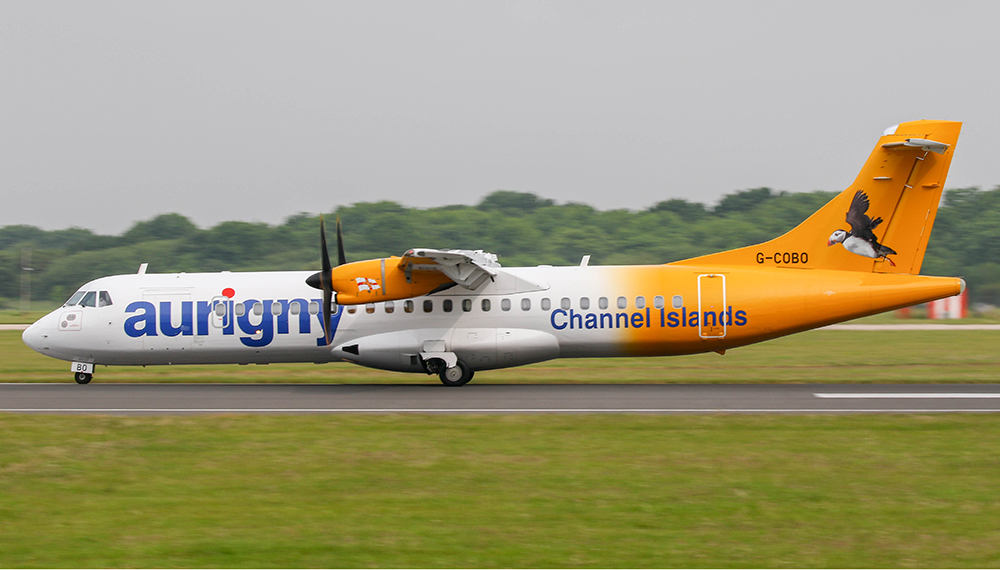


A pressure group lobbying for an extension to Guernsey’s runway, who have made multiple far-reaching claims about local aviation and the Bailiwick’s runways, have seen some of their arguments for runway extension rubbished by Aurigny and Gatwick Airport.
The Guernsey Aviation Advisory Group (GAAG), of which businessman Peter Bachmann and ex-deputy Jo Mooney are members, argued strongly in favour of extending Guernsey’s runway for economic reasons, in a briefing paper seen by Express. This could include the use of an Engineered Materials Arresting System (EMAS).
One claim made by GAAG is that the aviation industry is likely to move away from turboprop aircraft towards jet aircraft due to recovering air passenger numbers post-pandemic.
“Economic considerations will ultimately force Gatwick to maximise revenue by banning turboprops taking up landing slots, which always was their stated intention pre-covid-19,” they said.
Speaking to Express, Mr Bachmann said that turboprops are “going to become a real problem” at Gatwick due to commercial unviability, adding: “this is very much on Gatwick’s radar”. Therefore, he said that extending Guernsey’s runway to accommodate larger jet aircraft with full payloads is essential.
But a spokesperson for Gatwick Airport has subsequently confirmed there are “no plans to ban turboprop aircraft from the airport”.
Turboprops are used extensively by States-owned Aurigny for its Guernsey-based operations, including out of Gatwick Airport. Aurigny also recently highlighted the possibility of replacing their Embraer jet and Dornier aircraft with further ATR-72 turboprops as part of a fleet rationalisation programme.

Pictured: Former Deputy Joe Mooney, now a member of GAAG, has been outspoken on the need to extend Guernsey's runway for a number of years.
GAAG suggested that a potential ban on turboprops could be because Gatwick can then offer take-off slots to larger aircraft for a profit. They suggested that Aurigny could sub-let their slots at the airport in the event of a ban including ATR-72s.
However, Aurigny does not anticipate this becoming a reality: “We continue to maintain and build our relationship with Gatwick Airport as are other regional airlines.
“Gatwick has plans to bring its existing northern emergency runway into regular use, exclusively for narrow bodied aircraft, which will significantly increase capacity at the airport."
Another argument supporting runway extension tabled by GAAG suggested that jet aircraft can offer a lower carbon footprint per passenger mile flown than turboprops, which is a net-zero target for the States of Guernsey.
“It is only with a longer runway that industry standard low emission, quieter, larger aircraft can safely and economically use Guernsey’s airport, fully loaded,” they said, with Mr Bachmann adding such a move would represent an “environmental bonus”.
Currently, widely used European jet aircraft such as the Boeing 737 and Airbus 319/320 Neo’s cannot operate at full capacity from Guernsey because of the runway length.
Aurigny have since rejected these claims, saying their ATR-72 aircraft are amongst the most environmentally friendly currently available in the world.

Pictured: Aurigny is considering overhauling its fleet solely with ATR turboprop aircraft, which it says are more environmentally friendly than other aircraft.
“At the end of 2019 we took delivery of three new ATR 72-600 which are the most fuel-efficient regional aircraft. Over less than 500km, the fuel consumption per passenger of the ATR is 15% less than that of a standard petrol car”, said Aurigny.
“This is an important point when many of our journeys are over sea to connect with various points in the UK. We are looking to rationalise and simplify our fleet - and fuel efficiencies will certainly be part of the equation when we review our future business.
“We have already looked at the comparison of the ATR verses the jet, and the ATR offers a 32% reduction in CO2 emissions per seat and a 41% reduction in noise emissions during take-off and landing. In addition, the noise footprint of the ATR vs the Embraer 195 Is about one third of the size.”
GAAG also highlighted that an extended runway may be necessary “if Guernsey ever wants the next generation of electrically or hydrogen powered, environmentally friendly, aircraft” to operate from the island.
They mentioned Cranfield University - who specialise in electric and hydrogen air propulsion research - saying that these types of aircraft are a real possibility.
This point was also raised by Deputy Nicholas Moakes, a member of the Committee for Economic Development, last year. He said that electric aircraft may require a longer runway and therefore not extending its length could result in more CO2 emissions from the airport.

Pictured: Deputy Neil Inder's committee will bring a policy letter to the States later this year, which could ask the Assembly to consider extending the islands runway to at least 1,700 metres.
GAAG also threw their weight behind proposals to establish a new safety area at the easterly side of the airport. Mr Bachmann claimed the Civil Aviation Authority, who grant licenses to airports, gave a special license to Guernsey since there is no substantial safety provisions in that area.
He labeled the use of an EMAS system “a game-changer” as it would not only improve safety but “will also hugely reduce all the construction costs, previously indicated by Frontier Economics”. The consultancy firm reported that only a 1% increase in passenger numbers to Guernsey Airport would be required to pay back the construction costs of extension over a 40-year period.
GAAG said that this extension would be possible within current airport boundaries, requiring “no changes to Les Blicqs valley, houses, road or water tower”.
In the most recent States meeting the President of the Committee for Economic Development, Deputy Neil Inder, reiterated that his committee is “under a States' resolution to bring a business case for the extension of Guernsey Airport's runway to at least 1,700m to the Assembly.
“The Committee has received the updated cost benefit analysis from Frontier Economics and further work is currently being undertaken on the technical and regulatory feasibility of various options that would utilise an EMAS,” said Deputy Inder.
“Once that work has been completed and further work on the Airport Masterplan has been progressed, the Committee will bring a Policy letter to the Assembly later this year."
Comments
Comments on this story express the views of the commentator only, not Bailiwick Publishing. We are unable to guarantee the accuracy of any of those comments.